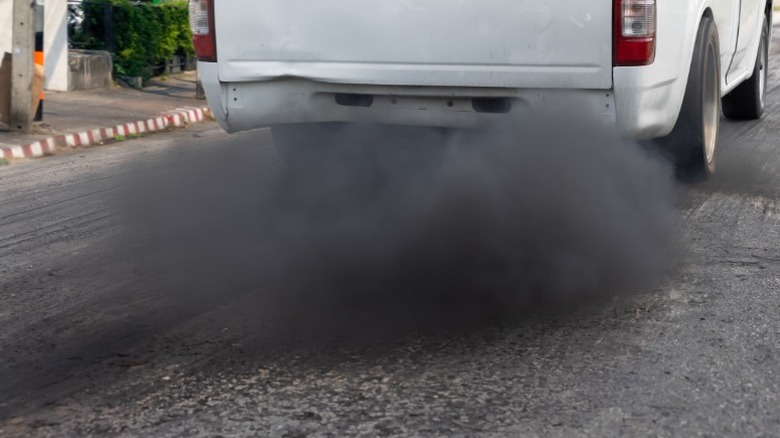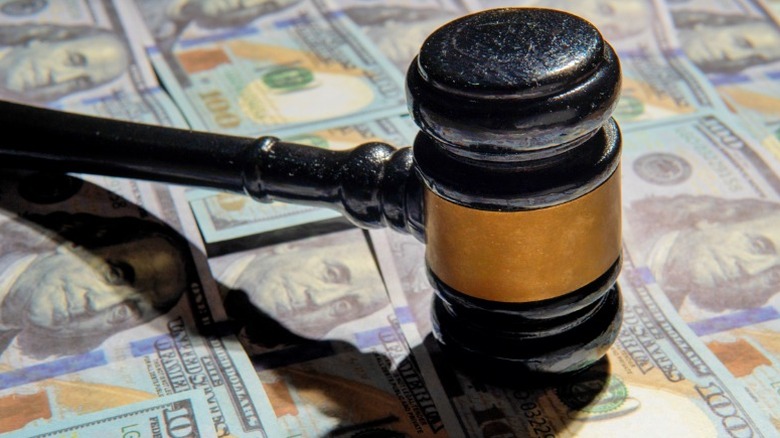For the average pickup truck owner, the phrase “deleted truck” is unlikely to be a part of their lexicon. However, for the subset of truck owners who like them as big, loud, and strong as possible, this concept is something they’re likely aware of, and maybe even take part in themselves. But what is a deleted truck? Well, the first rule of deleted truck club is you don’t talk about deleted truck club. Fortunately for you curious readers though, I am not a part of deleted truck club, so I’m about to spill all the hot, noxious, diesel exhaust-flavored tea.
In the diesel world, when you hear someone say their truck is “deleted,” they’re not talking about high-tech stealth technology or scratching off serial numbers; they’re talking about deleting the emissions control systems that modern diesel engines come with. This usually includes removing the Diesel Particulate Filter (DPF), Exhaust Gas Recirculation (EGR) system, and the Selective Catalytic Reduction (SCR) system that uses DEF (diesel exhaust fluid). With those systems gone, a truck can feel like a different beast altogether: more reliable, more powerful, and often loud as hell.
The deleted origin story
To understand how this whole deleted truck concept and its inevitable semi-secret sub-culture began, we have to look into history. In 2007, the Environmental Protection Agency (EPA) implemented new standards targeting diesel emissions, which included requiring all future diesel pickups to ship from the factory with the aforementioned systems. Before that, truck owners had long been modifying their trucks to improve performance. However, the EPA’s changes made it illegal to do so. They declared that the days of these road monsters freely belching black smoke into our fragile atmosphere without consequence were done.
The Diesel Emissions Reduction Act (DERA) included a lot of new rules that meant little to the average driver. But the diesel truck owners, the real ones who work their trucks hard towing and hauling over long distances, noticed something — these mandatory emissions controlling systems made their trucks seem, well, wimpier. Furthermore, the diesel pickup owners who simply used theirs as daily drivers realized that stop-and-go conditions and city driving brought out some flaws in the systems, mainly DPF filters that were easily clogged and failures of the EGR, which were expensive to repair. Not ones to sit idly by and let ole’ Uncle Sam turn their mean machines into sissies, truck owners simply continued to make their mods on the downlow.
Don’t get caught driving deleted
If you search the internet, particularly Facebook groups and Reddit threads of the diesel persuasion, you’ll likely find enterprising yet unscrupulous “dealers” of mod kits and tuners designed to amp up the power and get rid of the systems holding trucks back. But before you consider one of these black market diesel mods, know this — deleting your truck can come with heavy consequences.
Tampering with any vehicle’s emission control system is a violation of federal law, regardless of whether you live in a state that mandates emissions testing. You can get slapped with a whopping fine of nearly $5,000 for each modified part. For dealers and diesel shops caught installing illegal emissions defeat devices, the penalties can not only include potentially millions in fines, but an unintended long-term vacation in federal prison.
Even though it’s possible that emissions standards could end up being relaxed under the current administration, for now, it’s a much smarter idea to keep you and your truck out of trouble by not driving deleted. Thankfully, legally compliant alternatives have emerged on the market, which offer improvements to power production and reliability while keeping your factory emissions systems intact. Sure, you may not feel like you’re stickin’ it to the man, but at least you’re far less likely to end up in expensive legal trouble, with the added bonus of not voiding your new truck’s factory warranty.




